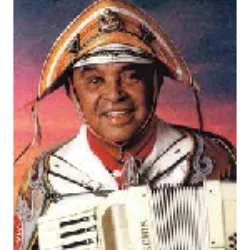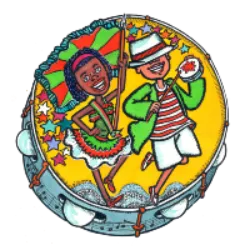In the 90s

In the 90s, Lapa emerged as one of the most vibrant samba strongholds in Rio de Janeiro in the early days of the 21st century. Its revitalization, transforming the old and semi-abandoned "neighborhood of sin" into an urbanized area, bright and full of bars and restaurants with live music, presents the city with a treasure. Young singers and composers, mostly from the middle class, were already involved in a fascinating research into ancient samba, gradually occupying the spaces between the neighborhood's tables. Veterans, or almost so, share the stage alongside the younger ones. Furthermore, these young people renew and create new sambas. In this context, names like Teresa Cristina, Moyseis Marques and the Casuarina group emerge as representatives of the new sound of Lapa. At the same time, pagode groups remain active, releasing albums and performing shows.
Samba was born in Bahia in the 19th century
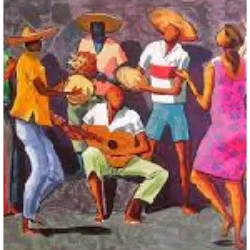
Samba was born in Bahia in the 19th century, influenced by African culture and slave festivals. In 1910, it gained prominence in Rio de Janeiro, mixing with other rhythms. Despite the first registration in 1917, samba grew in the 1930s with samba schools and radio. Singers such as Noel Rosa, Cartola and others marked its history. Over time, styles such as party alto, samba-enredo and Samba-Rock emerged, the latter becoming a popular ballroom dance.
Test yourself with one of these challenges 👇
Discover some interesting facts about Samba & Pagode
Pagode and samba, although they share roots, have marked differences
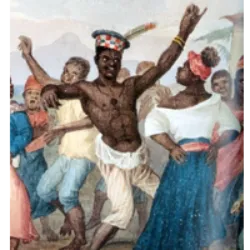
Pagode and samba, although they share roots, have marked differences. Samba has a slower rhythm and focuses on social themes, using string instruments. In contrast, pagode is more fast-paced, with everyday lyrics, and may include wind instruments. Both are enjoyed in Brazil, with samba being a deep-rooted cultural expression, while pagode evolved as a contemporary variant of samba, gaining recent popularity. Recognizing this musical diversity is fundamental to appreciating the richness of Brazilian music.
Pagode emerged as an offshoot of samba at the end of the
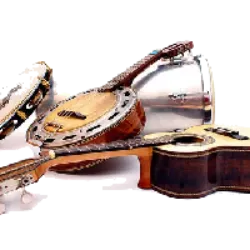
Pagode emerged as an offshoot of samba at the end of the 1970s in Rio de Janeiro, at backyard parties. Beth Carvalho played a crucial role in promoting the genre, when she met the group Fundo de Quintal. Pagoda innovation included the creation of percussion instruments. Beth Carvalho invited Fundo de Quintal for the album "De Pé no Chão" (1978), launching artists such as Jorge Aragão and Zeca Pagodinho. In the 90s, pagode gained prominence with romantic lyrics and the success of groups such as Raça Negra and Art Popular.
At the beginning, there is samba. Or semba

At the beginning, there is samba. Or semba. Or whatever the name given to the singing and dancing parties of the Bahians of Cidade Nova. Later, samba evolves into a distinct musical genre. Whether sung, like the one by the group that created "Pelo Telephone", or danced in the front rooms, including Ciata, among other Bahian "aunts" and their descendants. In backyards, Afro cults are celebrated with the tacit connivance of the police. Samba, now as a genre, is born from umbigada, batuque, lundu, polka and several other influences, with its graceful movements and captivating nuances, often intertwining with maxixe, the "excommunicated dance". It is this amaxixado samba, exemplified by artists such as Sinhô, nicknamed the King of Samba, and "Pelo Telephone" himself, which rocked Rio de Janeiro, including during Carnival, in the first three decades of the 20th century.
Ismael Silva was an important Brazilian samba player, born in Niterói
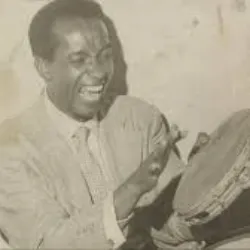
Ismael Silva was an important Brazilian samba player, born in Niterói, Rio de Janeiro, on September 14, 1905, and died on March 14, 1978. He played a fundamental role in the development of Rio de Janeiro samba and is considered one of the pioneers of the genre . Ismael Silva was one of the founders of the famous samba school Estação Primeira de Mangueira, in 1928, and is credited with having composed, in partnership with other musicians, the first song considered samba, entitled "Pelo Telephone". This composition, from 1916, is often recognized as the starting point for samba as a musical genre. In addition to his contribution to music, Ismael Silva was also known for his skill as an instrumentalist and composer. He actively participated in the Rio music scene in the 1920s and 1930s, being one of the main representatives of roots samba.
In the 1930s, a period known as the Golden Age of popular song
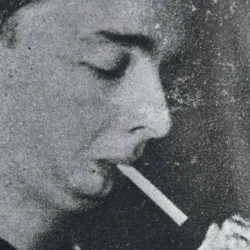
In the 1930s, a period known as the Golden Age of popular song, samba consolidated itself as Brazil's national music. While it is adopted by white middle-class composers, it also gives deserved recognition to the black people who gave rise to this musical genre. Meaningful interracial partnerships emerge. Getúlio Vargas' decree, allowing radio stations to broadcast advertisements during their programs, marks the beginning of fees and drives the professionalization of the musical class. The innovation of electrical recording opens space for singers with softer voices, such as Mário Reis and Carmen Miranda, to enter the phonographic universe, moving samba away from operatic excesses. Quickly, Reis, Carmen and others became radio idols. The official parade of the samba schools is established, and samba shares the preference of Rio revelers with the march.
Test yourself with one of these challenges 👇
HOME




